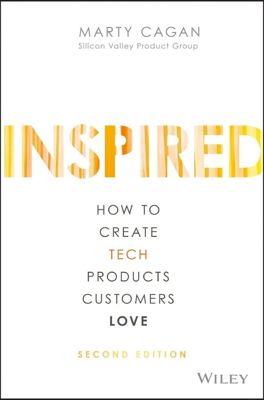PART I: Lessons From Top Tech Companies
In the mid-1980s, as a young software engineer at Hewlett Packard (HP), the author worked on developing AI technology for a low-cost workstation. Despite technical achievements and positive press, the product failed commercially, raising serious questions about the company’s product decision-making processes. This pivotal experience taught the author a crucial lesson: even with a strong engineering team, success is evasive if the product is unappealing to customers.
The author discovers that product decisions stemmed from the marketing-driven product management team, which lacked effective strategies. This realization led him to vow only to work on products with clear demand and utility, setting the stage for his future successes at companies such as HP, Netscape, eBay, and various tech startups.
In subsequent years, while working on globally recognized tech products and consulting for companies looking to improve their product development, the author identifies stark differences in product creation between leading tech companies and most other firms. Many organizations still cling to outdated practices, often influenced by lackluster academic programs and static industry norms.
Behind Every Great Product
The fundamental premise is that every successful product has a driving force behind it—a person or a team that creatively aligns technology and design to solve genuine customer problems while also addressing business needs. These individuals typically fall into product management roles, whether formally as product managers or as leaders taking charge in other capacities. This role is distinct, requiring intensive, collaborative effort and is not simply about managing schedules or resources—it is about leading the creation of valuable products.
Technology-Powered Products and Services
The focus is solely on products fueled by technology, which today encompasses a wide array of digital and hybrid services across various sectors such as e-commerce, social media, and more. Despite considerable advice available for non-tech products, tech-enabled services present unique challenges in their development and delivery that this book seeks to address.
Startups: Getting to Product/Marketing Fit
Startups are primarily defined by their quest for product/market fit—a marker of their potential longevity and success. This early stage is characterized by intense innovation and agility but is also fraught with risks of failure. Founders, often doubling as product managers, must drive the product to fit a viable market need before funds diminish, a scenario common in the tech industry.
Growth-Stage Companies: Scaling to Success
Once a startup achieves product/market fit, the next hurdle is scaling effectively. Growth involves not just expanding the team but also scaling the product lines and infrastructure without losing the innovative edge or bogging down in operational inefficiencies. The complexity of growing pains includes managing more extensive teams and ensuring all stakeholders align with the broadening scope of the business.
Enterprise Companies: Consistent Product Innovation
Successful scaling leads to enterprise status, where consistent innovation becomes imperative to sustain business health and market relevance. However, large enterprises often struggle with maintaining innovation, falling into routines that capitalize on existing successes rather than seeking new growth avenues. Effective leadership and a commitment to ongoing product innovation are crucial to avoiding stagnation.
The Root Causes of Failed Product Efforts
Many product efforts falter due to entrenched, outdated methods of product development that lack customer and market alignment. Common pitfalls include a dependence on hierarchical decision-making, unclear prioritization of projects, and a disconnect between innovative capabilities and actual market needs. Companies need to adopt more iterative, customer-focused development processes to remain competitive.
Beyond Lean and Agile
While Lean and Agile methodologies have brought significant improvements in product development, their misapplication can lead to inefficiencies and product mismatches. True product innovation requires a deeper integration of these principles, focusing on risk mitigation, collaborative design, and problem-solving rather than mere feature implementation.
Key Concepts
The book encapsulates several core concepts critical to modern product development:
- Holistic Product Definition: Understanding products as ecosystems that encompass user experience, functionality, technical infrastructure, and marketability.
- Continuous Discovery and Delivery: Balancing between ideating and refining viable products and ensuring their market delivery.
- Product Discovery: Using prototypes to experiment and validate product ideas rapidly.
- Product Delivery: Ensuring the product meets quality standards necessary for market release.
- Product Vision: Maintaining a clear, long-term vision for the product that aligns with the company’s mission and market evolution.
The text educates on bridging the gap between traditional product development practices and the dynamic needs of contemporary tech products, emphasizing iterative learning, user-centric design, and strategic business alignment.
